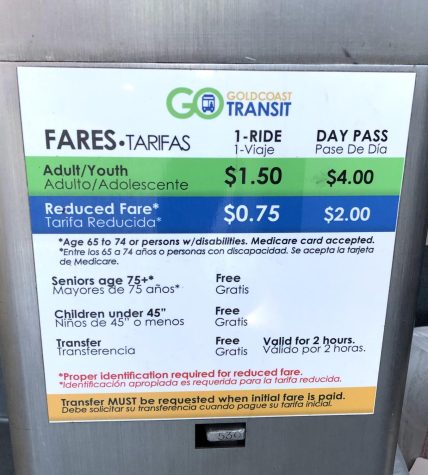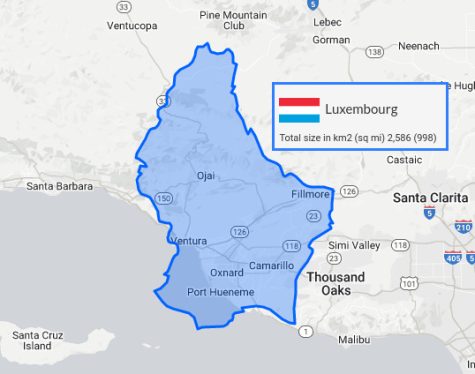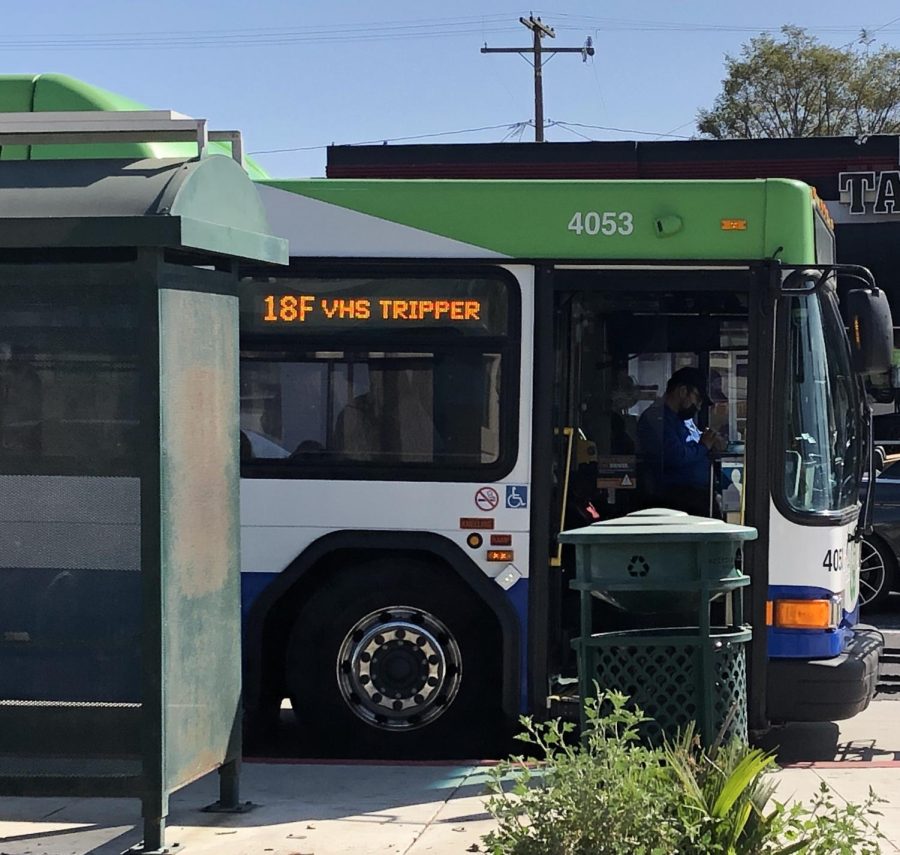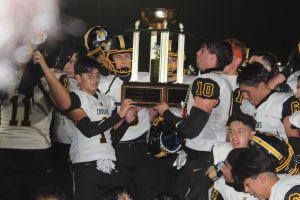Opinion: Fare free public transportation is a necessity for the modern-day
Gold Coast Transit District offers a “VHS Tripper” service line which runs between Ventura High School and Ventura avenue. Photo by: Alejandro Hernandez
March 22, 2022
Public transportation is an essential service
Public transportation is defined by Merriam Webster as, “a system of trains, buses, etc., that is paid for or run by the government.” The city of Ventura is served by four public transportation providers which are Gold Coast Transit District (GCTD), VCTC Intercity, Amtrak and Metrolink. GCTD and VCTC are bus services while Amtrak and Metrolink are rail services.
Beginning on March 20, 2020, both GCTD and VCTC (colloquially known as the “blue bus”) paused fare collection due to social distancing. This, unfortunately, came to its conclusion on May 3, 2021.
The truth is that fare collection should have never resumed. Fare should have never been collected in the first place. Instead, public transportation should be free for all. This is known as fare-free public transportation (FFPT).
Public transportation should be viewed as an essential service similar to roads or water. Instead, it is often run as a business, with the intention of making a profit. Citizens are not expected to pay to use roads (at least not in Ventura County), nor are they expected to pay the fire department for putting out a house fire (the U.S. isn’t the Roman Republic). It should be no different when it comes to public transportation, with citizens being free to use the service at their discretion.
A large portion of public transportation ridership is composed of low-income individuals. According to a 2017 American Public Transportation Association (APTA) report, only 21 percent of people surveyed (695,748) who use public transportation made six figures or more (over $100,000). The same percentage of people made less than $15,000 per year, with nearly half making less than $50,000.
Sophomore Luis Otero, who often rides the bus, said, “I ride the bus because both of my parents work and they can’t pick me up or drop me off at school.”
If a student like Otero were to take the bus to and from school every school day (Monday-Friday), they would be spending $15 per week. It may not be a significant cost on its own, but the inconvenience of having to carry money is a burden all its own.
Junior Daniel Weedn said, “The bus fee isn’t a major inconvenience for me, but I do have multiple friends who find it difficult to get to school because they don’t have bus money. The bus is inherently expensive. All public transport should be free. It would make buses more accessible and potentially reduce personal car usage.”

Not only is FFPT in the interest of the financially disadvantaged, but it’s also convenient for everyone else. There would be no worry of having the necessary amount of money for fare, nor the worry of transfers. The simplicity of getting on and getting off without having to plan is a major advantage of free public transportation.
Freshman Lumine Long said, “I think that the bus should be free because a lot of people can’t pay for it. There was a guy who was trying to get on [the bus] but he didn’t have money. He was just trying to go home.”
According to VCTC, Ventura County had a total bus ridership of 2.7 million people in 2021. Before the pandemic, ridership stood at 5.2 million annually.
According to the GCTD annual report of 2020-2021, two and a half million dollars of their revenue came from passengers’ fares. This however is insignificant in comparison to their total revenue of $31 million. This means that if fare were no longer collected then there would be little change in revenue.
VCTC transit specialist Erin Kenneally said, “Traditionally passenger fares only cover approximately 10-30 percent of the cost of transit service in Ventura County. With the remainder of operating costs supported by outside sources such as state and federal grants, as well as funding from partner agencies in Santa Barbara (for the intercounty service) and by Cal State University Channel Island (for the CSUCI routes). During the pandemic, the Federal Transit Administration provided additional federal funding from the stimulus programs to offset losses in revenues, such as from local taxes or fares.”
As of March 2022, there is only one country in the world with nationwide FFPT. That country is Luxembourg, which is a small country in western Europe. While Ventura County is slightly over twice as large as Luxembourg (VC being 2,208 square miles in area while Luxembourg is 998 square miles in area), the country can still be looked to as an example of what FFPT could be.
Prior to Luxembourg’s switch to FFPT, its transportation system was only eight percent funded from fare revenue. This parallels Ventura County’s 10-30 percent fare coverage of total service costs. FFPT is not out of reach for Ventura County’s already heavily subsidized public transportation system. Luxembourg simply relied on taxes to cover the roughly $40 million loss from switching to a FFPT system.

The minimal loss of revenue to FFPT has been substantiated by the VCTC. Kenneally said, “The Federal Transit Administration provided additional funding which we were able to use to offset the loss of fare revenues [during the COVID-19 fare collection pause].” According to the VCTC, this was true of VCTC Intercity, GCTD, Simi Valley Transit, Thousand Oaks Transit, Camarillo Area Transit, Valley Express, Ojai Trolley and Moorpark City Transit.
Junior Ariana Mendez, who often rides the bus, said, “Right now I’m working on getting a car and my parents can’t pick me up [from school] because they work.”
With public transportation already being subsidized by the state, it should act as one of its organs. It should be no different than other public services. Police and Fire services are at no direct cost to citizens, and neither should transit be. Public transportation should be funded in the same way as those services, with tax revenue being its financial backer. FFPT is a pertinent step to a progressive society.









